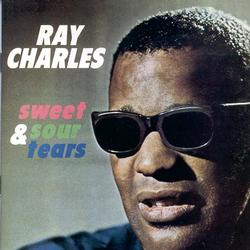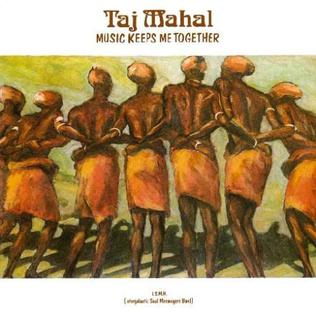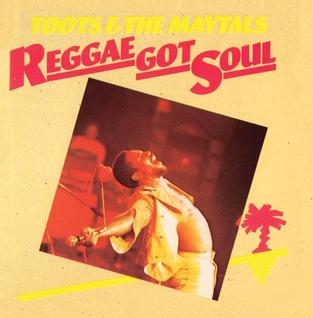Related Research Articles

"Maybe" is a song with words and music originally credited to End Records owner George Goldner and "Casey". The co-writing credit was later transferred to Richard Barrett. Arlene Smith, lead singer of the Chantels, is believed to be an uncredited co-writer. The song was first recorded by the Chantels on October 16, 1957, in a doo-wop style with Barrett playing piano, and released in December 1957. It climbed the charts in January 1958, reaching No. 15 in the Billboard Hot 100 and No. 2 in the Billboard R&B chart. It was subsequently described as "arguably, the first true glimmering of the girl group sound". Rolling Stone ranked it No. 199 on its list of The 500 Greatest Songs of All Time. It was also included in Robert Christgau's "Basic Record Library" of 1950s and 1960s recordings, published in Christgau's Record Guide: Rock Albums of the Seventies (1981).

The Glow is the seventh album by Bonnie Raitt, released in 1979. It was one of the first albums to be recorded and mixed digitally.

The Rolling Stones, Now! is the third American studio album by English rock band the Rolling Stones, released on 13 February 1965 by their initial American distributor, London Records. Although it contains two previously unissued songs and an alternative version, the album mostly consists of songs released earlier in the United Kingdom, plus the group's recent single in the United States, "Heart of Stone" backed with "What a Shame". Mick Jagger and Keith Richards wrote four of the songs on the album, with the balance composed by American rhythm and blues and rock and roll artists.

12 × 5 is the second American studio album by the English rock band the Rolling Stones, released in 1964 following the success of their American debut The Rolling Stones . It is an expanded version of the EP Five by Five, which had followed their debut album in the UK.

Greatest Hits is a 1966 greatest hits album for The Temptations, released by the Gordy (Motown) label. It peaked at #5 on the Billboard 200 album chart and remained on the chart for 120 weeks. Included are popular Temptations hits such as "The Way You Do the Things You Do", "Get Ready", "Since I Lost My Baby", "My Baby", "Don't Look Back", and their signature #1 hit, "My Girl". One non-album single, "Beauty Is Only Skin Deep", is also included; it was a #3 hit in the summer and fall of 1966.

Al Green Is Love is the ninth album by soul singer Al Green. It was his final of six consecutive albums to hit number 1 on the R&B/Soul Albums chart, and it peaked into the Top 40 on the Pop Albums chart.
Wet Willie is an American rock band from Mobile, Alabama. Their best-known song, "Keep On Smilin'", reached No. 10 on the U.S. Billboard Hot 100 chart in August 1974. Several other of the group's songs also appeared on the singles charts in the 1970s, which utilized their soulful brand of Southern rock.

Greatest Hits, Vol. 2 is the second greatest hits album for The Miracles, released in 1968 on Motown Records' Tamla label. It contained the most popular singles from the successful Going to a Go-Go, Away We A Go-Go and Make It Happen albums of the 1965–1967 period. It also featured the 1964 non-album single "Come On Do The Jerk", and two B-sides, "Choosey Beggar" and "Save Me". The hit single "I Second That Emotion" was new to album. This album reached the Top 10 on the Billboard 200 albums chart, peaking at #7, and peaked at #2 on Billboard's R&B album chart. Ten of the albums' 12 songs were written by Miracles members Smokey Robinson, Pete Moore, Marv Tarplin, Bobby Rogers, and Ronnie White.
"Get a Job" is a song by the Silhouettes released in November 1957. It reached the number one spot on the Billboard pop and R&B singles charts in February 1958, and was later included in Robert Christgau's "Basic Record Library" of 1950s and 1960s recordings, published in Christgau's Record Guide: Rock Albums of the Seventies (1981). The song celebrates the virtues of securing gainful employment.

What'd I Say is an album by American musician Ray Charles, released by Atlantic Records in late 1959. His sixth album since the debut Ray Charles in 1957, What'd I Say compiled a range of Charles' material, including his first top 10 hit, the title track "What'd I Say". The album became his first gold record., and is included in Robert Christgau's "Basic Record Library" of 1950s and 1960s recordings, published in Christgau's Record Guide: Rock Albums of the Seventies (1981).

The Drifters' Golden Hits is a 1968 compilation album by American doo wop/R&B vocal group The Drifters. The collection of the bands' later hits charted at #22 on Billboard's "Black Albums" chart and at #122 on the "Pop Albums" chart.

Chuck Berry's Golden Decade is a compilation of music by Chuck Berry, released in three volumes in 1967, 1973, and 1974. Covering the decade from 1955 to 1964, each volume consists of a two-LP set of 24 songs recorded by Berry. The first volume reached number 72 on Billboard's Pop Albums chart. The second volume peaked at number 110. The third volume, which included only two hit singles among its tracks, did not chart.

Sweet & Sour Tears is a 1964 album by Ray Charles. It is a concept album featuring songs with titles or lyrics referring to crying. In 1997, Rhino Records reissued the album on compact disc with seven bonus tracks from his early career (1956–1971) that added to the "crying" theme.

I Miss You is the debut album by Harold Melvin & the Blue Notes, released on Philadelphia International in August 25, 1972. It was produced by Kenneth Gamble & Leon Huff.

Music Keeps Me Together is the eighth studio album by American blues artist Taj Mahal. The album was remixed at Sigma Sound Studios in Philadelphia by Jay Mark and Carl Paruolo.

Ray Charles Greatest Hits is a 1962 album by Ray Charles. Although many similarly titled albums would be released over the years, this was the first, and it contained many tracks previously released by ABC only as singles.
To Know You Is to Love You is an electric blues album by B. B. King, released in 1973. Produced by Dave Crawford in Philadelphia, it includes the participation of Stevie Wonder, the Memphis Horns, and members of MFSB, the house band for Philadelphia International Records in the early and mid-1970s.

Christgau's Record Guide: Rock Albums of the Seventies is a music reference book by American music journalist and essayist Robert Christgau. It was first published in October 1981 by Ticknor & Fields. The book compiles approximately 3,000 of Christgau's capsule album reviews, most of which were originally written for his "Consumer Guide" column in The Village Voice throughout the 1970s. The entries feature annotated details about each record's release and cover a variety of genres related to rock music.

"Speedoo" is a song written by Esther Navarro and performed by The Cadillacs featuring the Jesse Powell Orchestra. It reached number 3 on the U.S. R&B chart and number 17 on the U.S. pop chart in 1955. The song was featured on their 1957 album, The Fabulous Cadillacs. The lead vocal was by Earl Carroll.

Reggae Got Soul is an album by the Jamaican reggae group Toots and the Maytals, released in July 1976 by Island Records.
References
- 1 2 3 Nations, Opal Louis (2001). ""How Do You Like Me Now?" - Earl Lewis & The Channels" (PDF).
{{cite journal}}: Cite journal requires|journal=(help) - ↑ The Channels at Allmusic.com
- ↑ "Classic Urban Harmony Newsletter #05". us6.campaign-archive.com. Retrieved 2023-08-11.
- ↑ "Obituary | Lawrence Hampden". Unity Funeral Chapels. Retrieved 2023-07-17.
- ↑ Christgau, Robert (1981). "A Basic Record Library: The Fifties and Sixties". Christgau's Record Guide: Rock Albums of the Seventies . Ticknor & Fields. ISBN 0899190251 . Retrieved March 16, 2019– via robertchristgau.com.